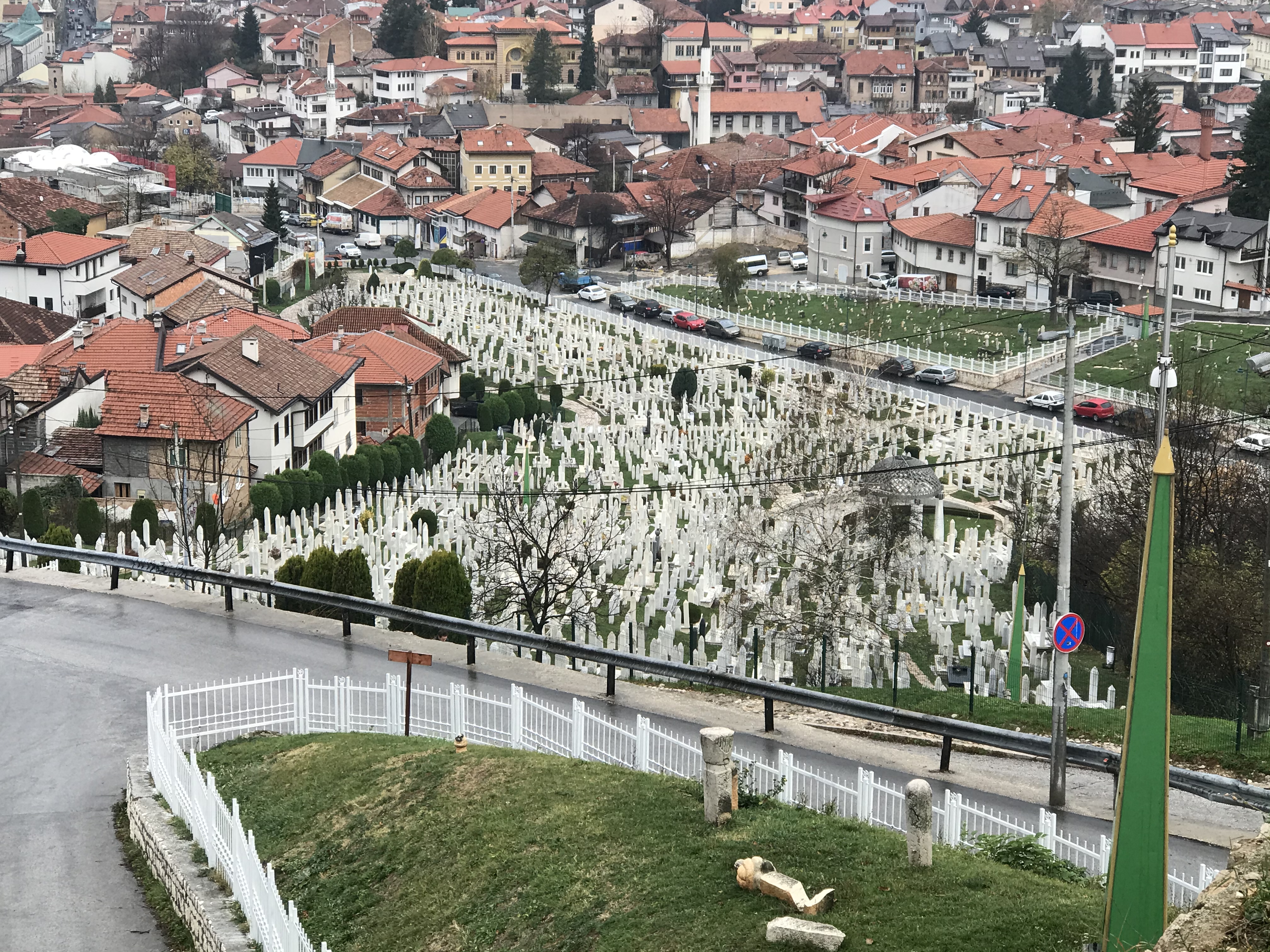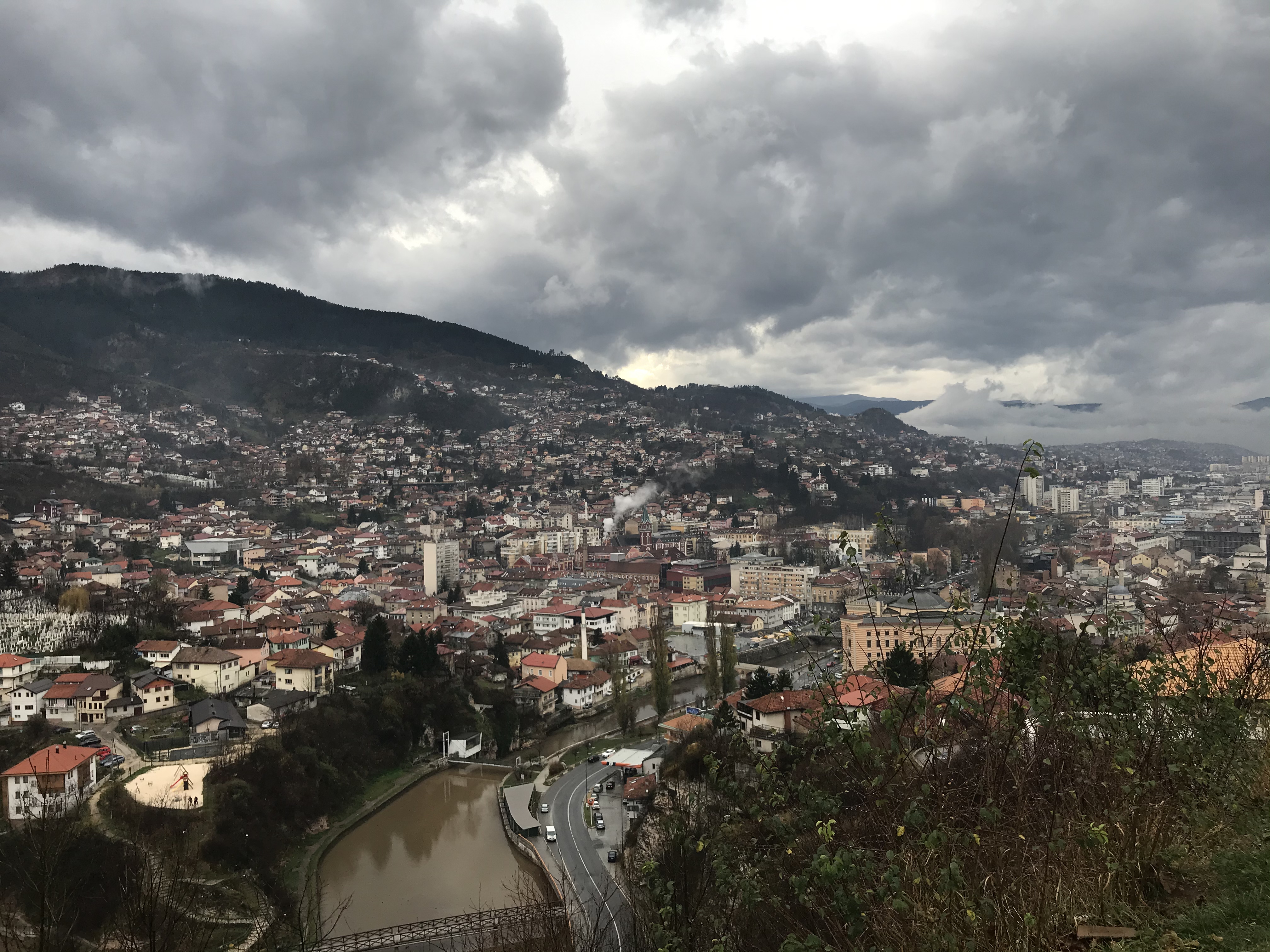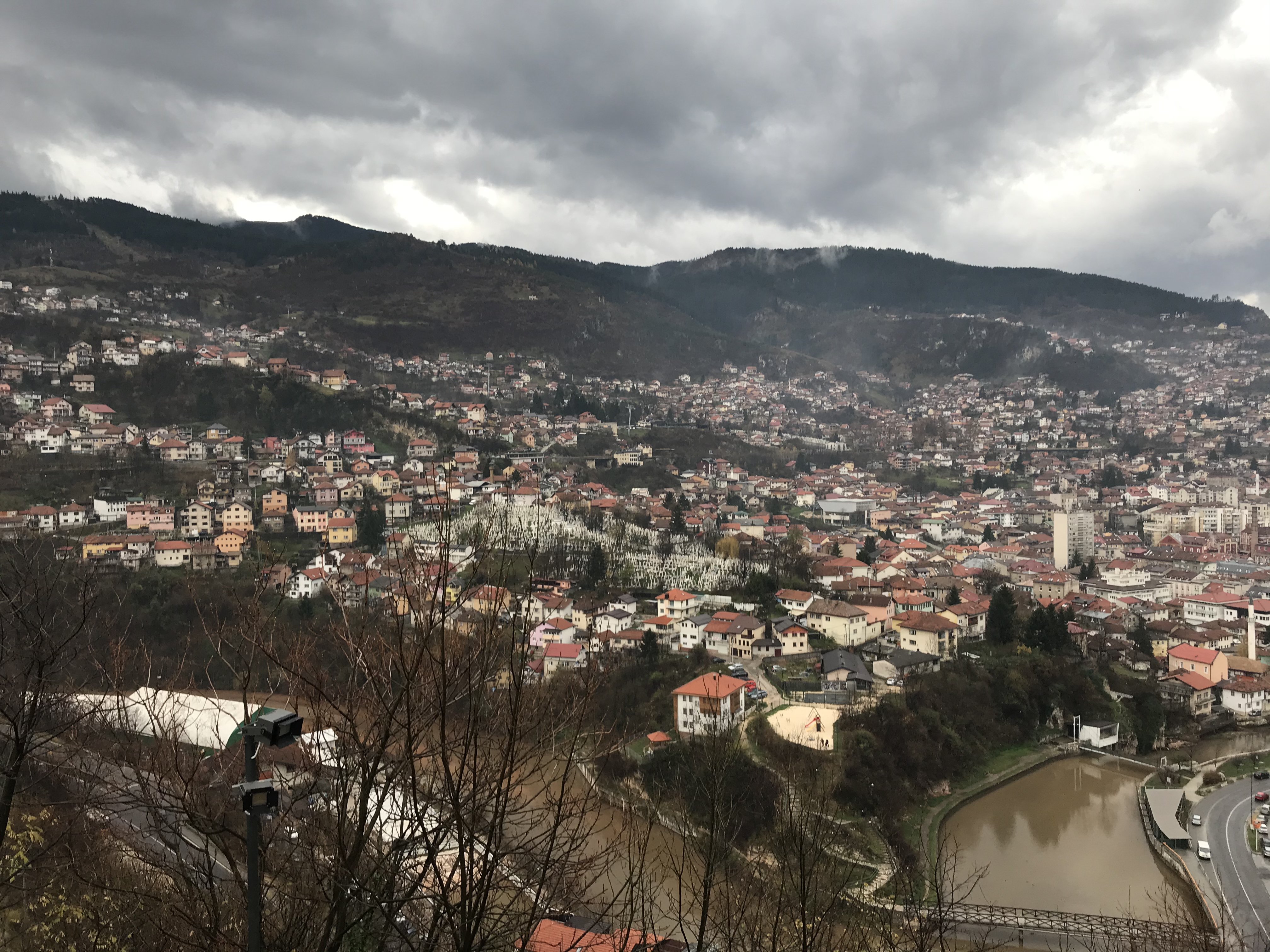“There are no atheists in my van,” cracked our guide, Almir, early on in our tour of Sarajevo and its environs. He was making a joke about his driving, but it didn’t seem to be a coincidence that he used this particular phrase on this particular tour. They didn’t have foxholes during the Siege, but they had tunnels. And it’s hard to imagine atheism being particularly prevalent in a situation where a sniper’s bullet or a mortar’s shell could end your life at any moment.
The Siege of Sarajevo was the longest siege of a capital city in modern warfare, lasting three times longer than the Battle of Stalingrad and a year longer than the Siege of Leningrad. And Sarajevo was (and remains) a city ill-suited to sieges; nestled at the bottom of a valley and surrounded on all sides by looming hills and forested slopes, it’s not hard to imagine how easy it would be to besiege (and how hard it would be to resist invaders).
A brief history of the Sarajevo Siege
The Siege began on April 6th 1992, in light of the international community’s recognition of Bosnia and Herzegovina as an independent country. This ran counter to the wishes of Serbia proper and their Bosnian brethren, who wished to see Yugoslavia continue (albeit under Serb domination).
When Bosnia gained recognition as an independent country, Bosnian Serbs and paramilitaries from Serbia proper engaged in open warfare against the Bosniak (Muslim Bosnian) population. Throughout the country, Bosniak-majority villages and towns were ransacked and their populations brutalised, often with the assistance of local Serbs.
In Sarajevo, the situation was particularly dire. Owing to its location in a valley, it was easy for Serb forces to encircle and besiege it. On the day Bosnia was recognised as an independent country, Serb forces began shelling the city. By early May, they had achieved a complete blockade of the city, cutting off food, medicine, and all utilities.
Despite having superior equipment and ordnance, however, the Serb forces were unable to take the city, owing to the numerical advantage held by Bosnia-Herzegovnia troops.
The scene was set for a protracted and brutal siege, during which the Serbs were repeatedly and roundly condemned by the international community for their cruel and inhumane acts.
The Bobsleigh and Luge Track








Situated high above the city on Trebević Mountain, the Sarajevo Bobsleigh and Luge track were built for the 1984 Winter Olympics. It was used as an artillery position during the Siege, and still features defensive holes bored into it by Serb forces.
These days it’s been extensively redecorated by artistic young locals, and sports some truly impressive graffiti. Be warned, though: word is that it will soon be cleaned up, stripped of graffiti, and once more used as a bobsleigh track.
The Tunnel of Hope




Built-in mid-1993 by Bosnian forces, the Tunel Spasa (Tunnel of Hope) became a literal lifeline for the people of Sarajevo, linking them with the UN-controlled area beyond Sarajevo Airport and allowing much-needed food, medical supplies and weapons into the besieged city.
The Tunnel Museum is located at a house donated to the government by a Bosniak family who wanted to immortalise the location and features original sections of the tunnels and several placards explaining the history of both the tunnels and the siege. Keep an eye out for the defaced image of Serbian president and war criminal Slobodan Milošević.
The Yellow Fortress
Offering a view of the city opposite from the Bobsleigh track, this 18th-century fortress is not particularly notable in of itself, but grants a fantastic view of the city.
The Old Jewish Cemetery




A location used somewhat cynically by the Serbian forces during the Sarajevo Siege, this cemetery dates back to some 500 years ago and has almost 4000 graves. There are also four monuments to Jewish victims of fascism, including one to those killed by the particularly brutal Croatian Ustasha militants.





The cemetery today bears the scars of the Siege; several gravestones are bullet-pocked and the monuments to the victims of fascism are particularly damaged, whether by design or chance.
Should I visit Sarajevo?
Absolutely – in many ways, the Bosnian capital is much more interesting and much less touristy than that of its northern neighbour, Croatia, and the Sarajevo Siege Tour, in particular, is well worth taking.
See Sarajevo for yourself on either our Balkan Badlands tour or the Eurasian Adventure!










